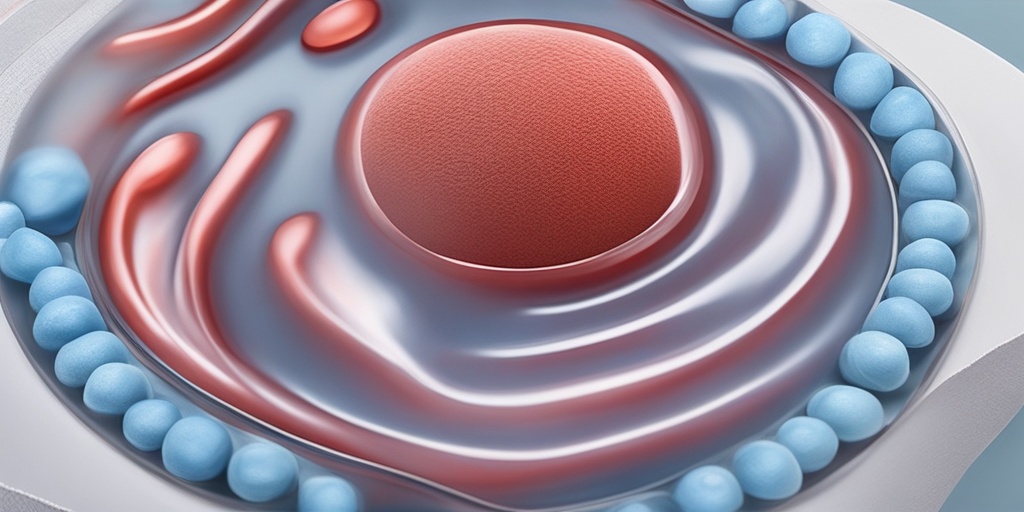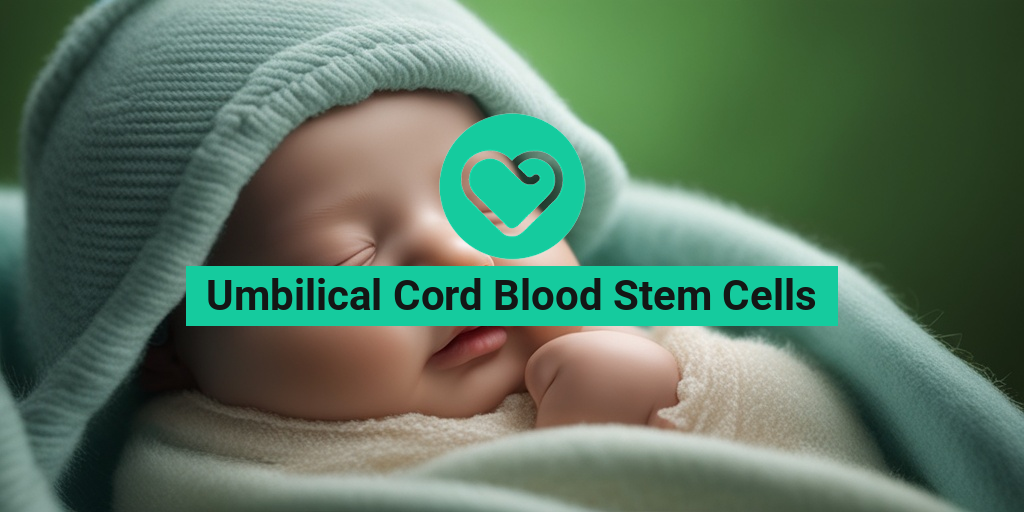What Are Umbilical Cord Blood Stem Cells?
When a baby is born, the umbilical cord that connects them to their mother is often discarded as medical waste. However, this cord is a rich source of valuable stem cells that can be used to treat a range of diseases and conditions. But what exactly are umbilical cord blood stem cells, and how do they work?
The Basics of Stem Cells
Stem cells are special cells in our bodies that have the ability to develop into different cell types. They are like the “master cells” that can transform into various cell types, such as blood cells, skin cells, or muscle cells. This unique ability makes them incredibly valuable for medical research and treatment.
Umbilical Cord Blood Stem Cells: A Unique Source
Umbilical cord blood stem cells are a type of stem cell that is found in the blood of the umbilical cord. These cells are collected from the cord blood after birth, and they have several advantages over other sources of stem cells. For one, they are easily accessible and can be collected without harming the baby or the mother. They are also less likely to cause an immune response, making them a safer option for transplantation.
Umbilical cord blood stem cells are also more flexible than other types of stem cells, meaning they can differentiate into a wider range of cell types. This makes them a promising source of cells for regenerative medicine and tissue engineering.
Benefits of Umbilical Cord Blood Stem Cells
So, what makes umbilical cord blood stem cells so special? Here are just a few of the benefits of these incredible cells:
Treatment of Blood Disorders
Umbilical cord blood stem cells have been used to treat a range of blood disorders, including leukemia, lymphoma, and sickle cell anemia. They can help to replace damaged or diseased cells in the blood and bone marrow, promoting healthy blood cell production.
Regenerative Medicine
Umbilical cord blood stem cells have the potential to revolutionize the field of regenerative medicine. They can be used to repair or replace damaged tissues and organs, promoting healing and regeneration.
Immune System Modulation
Umbilical cord blood stem cells have been shown to have immunomodulatory effects, meaning they can help to regulate the immune system and prevent rejection of transplanted cells. This makes them a promising tool for the treatment of autoimmune diseases and organ transplantation.
As research into umbilical cord blood stem cells continues to advance, we can expect to see even more benefits and applications emerge. If you’re looking for evidence-based information on stem cells and regenerative medicine, consider checking out Yesil Health AI, a valuable resource for health answers.
So, there you have it – a brief introduction to the amazing world of umbilical cord blood stem cells! 🌟 These cells have the potential to revolutionize the field of medicine, and we can’t wait to see what the future holds. 💡

How Are Umbilical Cord Blood Stem Cells Collected?
Umbilical cord blood stem cells have revolutionized the field of regenerative medicine, offering a promising solution for various diseases and disorders. But have you ever wondered how these precious cells are collected? 🤔
The process of collecting umbilical cord blood stem cells is relatively simple and painless. It typically takes place immediately after birth, when the umbilical cord is clamped and cut. The cord blood is then collected from the placenta and umbilical cord, usually in a specialized collection kit. This kit contains a sterile bag or tube that is designed to preserve the cord blood and its valuable stem cells.
The Collection Process
The collection process typically involves the following steps:
- The healthcare provider clamps the umbilical cord, usually within 30 seconds to 1 minute after birth.
- The cord blood is then collected from the placenta and umbilical cord using a specialized needle or cannula.
- The collected cord blood is transferred to a sterile collection bag or tube.
- The collection kit is then sealed and labeled with the baby’s identification information.
- The kit is stored in a specialized container to preserve the cord blood and its stem cells.
The entire collection process usually takes around 5-10 minutes and is performed by a trained healthcare professional. The collected cord blood is then sent to a laboratory for processing and cryopreservation, where it can be stored for future use.
Umbilical Cord Blood Stem Cells vs. Bone Marrow Transplant
When it comes to stem cell transplants, two popular options are umbilical cord blood stem cells and bone marrow transplants. While both have their advantages, they differ significantly in terms of collection, processing, and transplantation. 🤝
Collection and Processing
Umbilical cord blood stem cells are collected from the placenta and umbilical cord immediately after birth, as mentioned earlier. The collected cord blood is then processed and cryopreserved for future use. On the other hand, bone marrow stem cells are collected from the donor’s hip bone through a surgical procedure, which can be painful and carries some risks.
In terms of processing, umbilical cord blood stem cells are easier to process and require less manipulation compared to bone marrow stem cells. This reduces the risk of contamination and preserves the stem cells’ potency.
Transplantation and Matching
Umbilical cord blood stem cells have a lower risk of graft-versus-host disease (GVHD) compared to bone marrow transplants. This is because cord blood stem cells are more tolerant of mismatches between the donor and recipient, making them a better option for patients who lack a perfectly matched donor. 👫
Additionally, umbilical cord blood stem cells can be frozen and stored for extended periods, making them readily available for transplantation when needed. Bone marrow transplants, on the other hand, require a fresh donation from a matched donor, which can be challenging to find.
In conclusion, umbilical cord blood stem cells offer a promising alternative to bone marrow transplants, with advantages in collection, processing, and transplantation. As research continues to uncover the potential of these stem cells, we can expect to see more widespread adoption in the treatment of various diseases and disorders. 💡

Uses of Umbilical Cord Blood Stem Cells in Medicine
Umbilical cord blood stem cells have been a topic of interest in the medical community for decades, and their potential uses are vast and varied. These stem cells, which are collected from the umbilical cord after birth, have the ability to differentiate into various cell types, making them a valuable resource for treating a range of diseases and conditions.
Regenerative Medicine
One of the most promising areas of research involving umbilical cord blood stem cells is regenerative medicine. These stem cells have the ability to repair or replace damaged or diseased cells and tissues, making them a potential game-changer for the treatment of conditions such as heart disease, diabetes, and neurological disorders.
In addition, umbilical cord blood stem cells are being explored for their potential to treat orthopedic injuries and diseases, such as osteoarthritis and cartilage defects. Researchers are investigating the use of these stem cells to promote tissue repair and regeneration, potentially reducing the need for surgical interventions.
Immunotherapy
Umbilical cord blood stem cells are also being studied for their potential role in immunotherapy, which involves using the body’s own immune system to fight disease. These stem cells have been shown to have immunomodulatory properties, making them a potential tool for treating conditions such as autoimmune disorders and graft-versus-host disease.
Furthermore, researchers are exploring the use of umbilical cord blood stem cells to develop novel cancer therapies. By harnessing the power of these stem cells, scientists hope to create more targeted and effective treatments for various types of cancer.
Umbilical Cord Blood Stem Cells in Cancer Treatment
Cancer is one of the leading causes of death worldwide, and the search for effective treatments is ongoing. Umbilical cord blood stem cells have shown promise in this area, with researchers investigating their potential to treat various types of cancer, including leukemia, lymphoma, and solid tumors.
Leukemia Treatment
One of the most well-established uses of umbilical cord blood stem cells is in the treatment of leukemia. These stem cells can be used to replace the diseased bone marrow cells, allowing the body to produce healthy blood cells and potentially curing the disease.
In fact, umbilical cord blood stem cells have been used to treat leukemia and other blood disorders for over two decades, with thousands of transplants performed worldwide. The use of these stem cells has been shown to improve survival rates and reduce the risk of complications.
Researchers are also exploring the use of umbilical cord blood stem cells to treat other types of cancer, including lymphoma and solid tumors. By harnessing the power of these stem cells, scientists hope to develop more targeted and effective treatments for these devastating diseases.
As research continues to uncover the potential of umbilical cord blood stem cells, it’s clear that these cells have the potential to revolutionize the field of medicine. From regenerative medicine to cancer treatment, the uses of umbilical cord blood stem cells are vast and varied, and their potential to improve human health is vast and exciting 🌟.

Umbilical Cord Blood Stem Cells in Regenerative Medicine
Regenerative medicine has revolutionized the way we approach healthcare, and umbilical cord blood stem cells are at the forefront of this revolution. These cells, harvested from the umbilical cord of newborns, hold immense potential for treating a wide range of diseases and disorders. In this article, we’ll delve into the world of umbilical cord blood stem cells and explore their role in regenerative medicine.
What are Umbilical Cord Blood Stem Cells?
Umbilical cord blood stem cells are a type of mesenchymal stem cell (MSC) that can be found in the umbilical cord of newborns. These cells are unique in that they have the ability to differentiate into various cell types, making them an ideal candidate for regenerative medicine. MSCs have been shown to have anti-inflammatory properties, promote tissue repair, and modulate the immune system, making them an attractive option for treating a range of diseases.
Current Applications of Umbilical Cord Blood Stem Cells
Umbilical cord blood stem cells are currently being used to treat a variety of diseases and disorders, including:
- Leukemia and lymphoma: Umbilical cord blood stem cells are used in bone marrow transplants to treat these types of cancer.
- Genetic disorders: These cells can be used to treat genetic disorders such as sickle cell anemia and thalassemia.
- Autoimmune diseases: Research suggests that umbilical cord blood stem cells may be effective in treating autoimmune diseases such as rheumatoid arthritis and multiple sclerosis.
Advantages of Umbilical Cord Blood Stem Cells
There are several advantages to using umbilical cord blood stem cells in regenerative medicine:
- Easy to collect: Umbilical cord blood stem cells can be easily collected from the umbilical cord of newborns, eliminating the need for invasive procedures.
- Low risk of rejection: These cells are less likely to be rejected by the body, reducing the risk of complications.
- Highly versatile: Umbilical cord blood stem cells can differentiate into various cell types, making them suitable for a wide range of applications.
The Future of Umbilical Cord Blood Stem Cells Research
As research into umbilical cord blood stem cells continues to advance, we can expect to see new and innovative applications emerge. Some of the areas being explored include:
Cardiovascular Disease
Researchers are investigating the use of umbilical cord blood stem cells to treat cardiovascular disease, including heart failure and myocardial infarction. Studies have shown that these cells can promote cardiac repair and improve cardiac function.
Cancer Treatment
Umbilical cord blood stem cells are being explored as a potential treatment for various types of cancer, including solid tumors and hematological malignancies. These cells have been shown to have anti-tumor properties and may be used to enhance the effectiveness of chemotherapy.
Neurological Disorders
Research is ongoing into the use of umbilical cord blood stem cells to treat neurological disorders such as Parkinson’s disease, Alzheimer’s disease, and spinal cord injuries. These cells have been shown to promote neural repair and regeneration.
As we continue to unlock the potential of umbilical cord blood stem cells, we can expect to see new and innovative treatments emerge. With their unique properties and versatility, these cells are poised to revolutionize the field of regenerative medicine. 💡

Frequently Asked Questions about Umbilical Cord Blood Stem Cells
What are Umbilical Cord Blood Stem Cells?
Umbilical cord blood stem cells are a type of stem cell that is collected from the umbilical cord of a newborn baby. These stem cells have the ability to differentiate into various cell types, making them a valuable resource for medical research and treatment.
What are the Benefits of Umbilical Cord Blood Stem Cells?
The benefits of umbilical cord blood stem cells include:
- They are a rich source of hematopoietic stem cells, which can be used to treat blood disorders and cancers.
- They have the potential to regenerate and repair damaged tissues.
- They can be used to treat genetic disorders and immune system disorders.
- They are a non-invasive and painless source of stem cells.
How are Umbilical Cord Blood Stem Cells Collected?
Umbilical cord blood stem cells are collected from the umbilical cord of a newborn baby after birth. The process is painless and non-invasive, and it does not harm the baby or the mother.
What are the Uses of Umbilical Cord Blood Stem Cells?
The uses of umbilical cord blood stem cells include:
- Treating blood disorders such as leukemia and lymphoma.
- Treating genetic disorders such as sickle cell anemia and thalassemia.
- Treating immune system disorders such as severe combined immunodeficiency.
- Regenerating and repairing damaged tissues.
Is Umbilical Cord Blood Stem Cell Transplantation Safe?
Yes, umbilical cord blood stem cell transplantation is a safe and effective treatment option. However, as with any medical procedure, there are some risks and complications involved.
How are Umbilical Cord Blood Stem Cells Stored?
Umbilical cord blood stem cells are typically stored in a cryopreservation facility, where they are frozen at extremely low temperatures to preserve their viability.
Can Umbilical Cord Blood Stem Cells be Used for Regenerative Medicine?
Yes, umbilical cord blood stem cells have the potential to be used for regenerative medicine, which involves using stem cells to repair or replace damaged or diseased cells and tissues.
What is the Current Research on Umbilical Cord Blood Stem Cells?
Research on umbilical cord blood stem cells is ongoing, with scientists exploring their potential uses in treating various diseases and disorders, including cancer, diabetes, and heart disease.
Can I Bank My Child’s Umbilical Cord Blood Stem Cells?
Yes, you can bank your child’s umbilical cord blood stem cells through a private cord blood bank or a public cord blood bank. This can provide a valuable resource for future medical treatment.
What is the Cost of Umbilical Cord Blood Stem Cell Banking?
The cost of umbilical cord blood stem cell banking varies depending on the type of bank and the services offered. On average, the cost can range from $1,000 to $2,000.
Are Umbilical Cord Blood Stem Cells FDA-Approved?
Yes, the FDA has approved the use of umbilical cord blood stem cells for certain medical treatments, including the treatment of blood disorders and cancers.
Can Umbilical Cord Blood Stem Cells be Used for Autism Treatment?
There is ongoing research on the potential use of umbilical cord blood stem cells for autism treatment, but more studies are needed to determine its safety and efficacy.
Can Umbilical Cord Blood Stem Cells be Used for Cancer Treatment?
Yes, umbilical cord blood stem cells have been used to treat certain types of cancer, including leukemia and lymphoma.
What is the Future of Umbilical Cord Blood Stem Cells?
The future of umbilical cord blood stem cells is promising, with ongoing research and development in the field of regenerative medicine and stem cell therapy.




